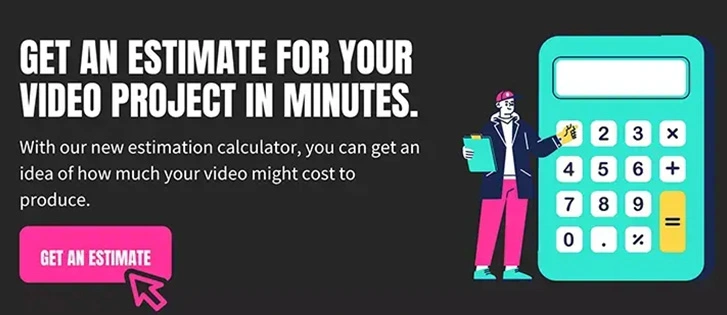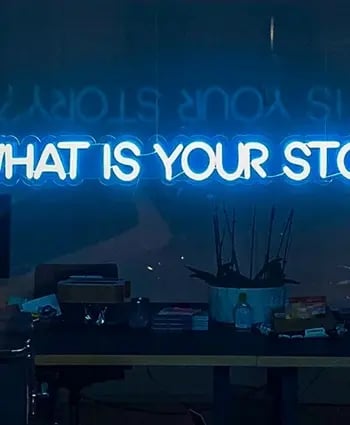7 Customer Success Story Examples to Learn From Right Now
Learn to craft compelling success stories: 7 examples show dos and don'ts in building trust and authenticity.
At Venture we know how powerful case study videos and stories are. Buyers and decision makers love them, in fact a staggering 73% of B2B buyers use them whilst researching an upcoming purchase.
Watch some customer success story videos we've created for our clients: click here.
Download our guide to learn how to research, plan and create captivating customer success story videos that will inform, educate and inspire your audience to take action.
What makes an effective customer success story?
Seems like an obvious question. Surely it's the ability to encourage your target audience to convert.
But that's just the end result you want to come from your success stories. You need to know the right process to get there. How do you create a success story with enough trust & authenticity to turn your leads into paying customers?
It turns out it's all in the name.
Good customer success stories focus on storytelling, not selling. [Tweet this]
Here are some examples to illustrate what I mean.
Some are good and some are not so good, but we can learn from them all. I'll point out what they do well or could do better, and how you can apply their strengths to your own customer success stories (or learn from their mistakes).
4 Traits of Effective Customer Success Stories
Before we dive in, let's run through what what the best success stories all have in common. What exactly does a focus on storytelling rather than selling boil down to in practice?
1. The spotlight is on the customer.
It's about the client and their story, rather than the company trying to sell to you. It feels authentic and real.
2. There's a logical progression.
The story moves logically from the customer's situation, to their problem, to the chosen solution, to the outcome. Read more about that here.
3. It features real human problems and emotions.
The focus of the success story is how the client felt, how their problems were solved, and how their life was improved. It makes the viewer feel something.
4. There are specifics and unique quirks.
The story is brought to life through data & figures, difficulties on the way to success, and specific ways in which the customer used the solution.
7 Great (and Not-so-Great) Success Stories
1. HubSpot Stresses the Pain Point
Why it works: At the end of the day, people want to buy from you so they can solve their own specific problems.
To successfully convince your target audience that you can help them, you need to prove that you've helped others who have been struggling with the same issues.
HubSpot does a great job of featuring their customer's pain points in this success story. From 0:38, nearly 30 seconds of the video are dedicated to how Mark & Pete were having difficulty keeping track of their customers before using HubSpot.
What to copy: Discover what problems your client had that your product or service helped to solve. Choose one or two that are most relevant to your target audience, and be sure to focus on them throughout the success story.
2. Salesforce Explains Customer Values & Goals
Why it works: Effective customer success stories are always about... the customer.
In this example, Salesforce spend a lot of time letting their client explain their values, beliefs and aims. This achieves two things: firstly, it shows how much the company cares about its customers and their goals. Secondly, it gives viewers the chance to relate to the client.
The more similar the customers you feature in your success stories are to your target audience, the more those stories will resonate with them.
What to copy: Create success stories about those customers that are closest to your ideal buyer persona. Be sure to give them enough time to speak about their situation, values, and goals.
3. FreshBooks Focuses on Honesty & Simplicity
Why it works: Success stories don't need to be complicated affairs. In fact, sometimes it's a case of the simpler the better.
FreshBooks decided to embrace the simple yet emotional story of Sarah and turn it into a customer success story that's authentic and powerful. They let her do the talking, and the result is a piece of content that positions FreshBooks as a genuinely trusted business.
This is a strong example of a success story that packs an honest, emotional punch.
What to copy: Don't over-complicate things. If your client has a compelling story to tell, let them tell it without interruption.
4. Shopify Shows its True Benefit
Why it works: There's a famous saying that you should "sell the hole, not the drill". In other words, your customers aren't buying your products or services for their surface features, but for the benefits they bring.
This customer success story shows benefits, rather than features. Shopify doesn't just sell an e-commerce platform; it also sells the opportunity for customers to run the online business they've always wanted.
What to copy: Work out the biggest benefits of your offering and make reference to them. Let your customers talk honestly about how your product or service helped make their lives easier, instead of asking them to list features.
5. Evernote Dives into the Specifics
Why it works: If your customer success story is too generic, you lose the power of telling a real story. That's why it's best to include specific details about your client, like how they tailor your product or service to their own needs.
This way your target audience get inspiration into how your solution might fit into their own situation, and are also more likely to trust you. This success story is so effective because the customer explains how they use Evernote to catalogue their menu and create specific lists.
What to copy: Use specific examples throughout your customer success story. Encourage your customer to mention figures, results, and quirks.
6. Zendesk Needs a Tighter Story
What is good: This success story effectively explains the customer's goals and needs, including specific examples about how they use Zendesk.
What could be better: However, the story behind this example could be stronger. The best customer success stories follow a logical structure to keep the story moving, which is most commonly:
- The situation,
- The problem,
- The solution,
- The outcome.
Zendesk's success story suffers from being too long and not structured enough. The customer begins with their business situation, then veers into how they use the service and the results of this, before finally mentioning some problems near the end.
What to do differently: Make sure your success story follows a succinct and logical story structure. This will ensure viewers stay engaged throughout.
7. Exact Target Allows Too Many Buzzwords
What is good: Exact Target does a good job of providing the viewer with visual interest. Engaging footage accompanies the customer interview and key phrases are displayed through supporting titles.
What could be better: Unfortunately this success story is bogged down by buzzwords.
It's not as bad as it could be, but when the client talks about "aggregating and leveraging customer data" it clouds their meaning and makes it harder for real emotion to come through.
This means that viewers will find it harder to connect with the customer and imagine themselves in their shoes. And that makes the success story less effective.
What to do differently: Choose your customers carefully, your success story relies on them and how they communicate. Make them feel at ease and encourage them to speak naturally.
Round-Up: It's All About Storytelling
The most important thing to remember when creating a customer success story is to keep the focus on the story your customer has to tell.
If you can tell that story simply, logically and emotionally, then you're well on your way to producing a standout piece of content that will continually build trust and convert leads.
Written by Lydia Cockerham Copywriter for Venture Videos — a full-service video production agency that specialises in producing creative videos & campaigns that get real results.





